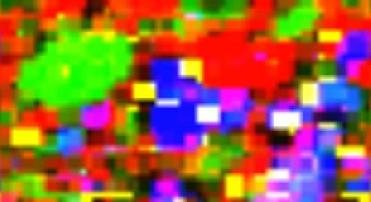
Raman spectroscopy of a lunar sample collected by Apollo 17 reveals graphite whiskers, shown in yellow. Photo by Andrew Steele, Carnegie Institution.
PASADENA, CALIFORNIA (BNS): Researchers have detected and dated carbon on the moon in the form of graphite -- the sooty stuff of pencil lead -- which survived from around 3.8 billion years ago, when the moon was heavily bombarded by meteorites.
In a new analysis of a lunar sample collected by Apollo 17, some of the graphite appeared in a rare rolled form known as "graphite whiskers," which scientists believe formed in the very high-temperature reactions initiated by a meteorite impact.
The discovery also means that the moon potentially holds a record of the carbon input by meteors into the Earth-moon system when life was just beginning to emerge on Earth, the research published in the journal Science said.
The research team, led by scientists at the Geophysical Laboratory of the Carnegie Institution for Science, used a new technique known as Raman spectroscopy on the sample.
Previous techniques enabled scientists to get a sense of the composition, but this kind of spectroscopy is more sensitive and also allows scientists to create an image of the minerals, NASA said.
The graphite whiskers appeared to be a few micrometers in diameter and up to about 10 microns long.
"It shows that modern spatially resolved techniques could be used to discover further surprises in the now 40-year-old Apollo collection," said co-author Mihaela Glamoclija.
The scientists ruled out the possibility that the graphite was a result of contamination, because graphite whiskers, in particular, form under very hot conditions, between 1,830 and 6,500 degrees Fahrenheit (1,273 to 3,900 Kelvin).
They also ruled out the solar wind as the source, because the graphite and graphite whiskers were much larger than carbon implanted by the solar wind, and while contamination occurred throughout the sample, the graphite was restricted to a discrete blackened area of the sample.
 Previous Article
Previous Article Next Article
Next Article













The Indian Air Force, in its flight trials evaluation report submitted before the Defence Ministry l..
view articleAn insight into the Medium Multi-Role Combat Aircraft competition...
view articleSky enthusiasts can now spot the International Space Station (ISS) commanded by Indian-American astr..
view article